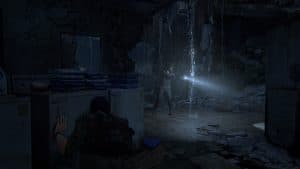The Last of Us Part I
Related Games
Description
🔥 What is The Last of Us Part I for PC?
The Last of Us Part I is a complete remake of the groundbreaking 2013 action-adventure game The Last of Us, developed by Naughty Dog and published by Sony Interactive Entertainment. Released for PlayStation 5 and later for PC, the game rebuilds the original from the ground up with modern technology, upgraded visuals, enhanced audio, and refined gameplay systems. It is not just a remaster but a reimagined version that brings the unforgettable story to life in a way that feels fresh for both longtime fans and newcomers.
Set in a post-apocalyptic United States ravaged by a fungal outbreak, the game follows Joel, a hardened smuggler, who is tasked with escorting a teenage girl named Ellie across the country. What begins as a dangerous escort mission soon transforms into a deeply personal journey that explores survival, loss, hope, and the fragile bonds that keep humanity alive. Every step of their path is filled with brutal encounters, both with infected creatures and desperate human survivors, making the narrative as intense as it is emotional.
The Last of Us Part I stands as a narrative-driven action game that blends cinematic storytelling with stealth, exploration, and combat. It expands on the emotional resonance of the original while embracing the technical advancements of modern consoles, making it the definitive way to experience one of the most beloved titles in gaming history.
👉 Features of The Last of Us Part I
Modernized Visuals and Audio
The remake features a full graphical overhaul, with character models rebuilt from scratch, lifelike facial animations, and vastly improved lighting systems. Environments look denser, more detailed, and more atmospheric, with every crumbling building, rusting car, and overgrown ruin telling a story. The soundtrack, already iconic, benefits from enhanced audio mixing, while 3D spatial sound makes every infected shriek or whispered conversation more immersive.
Refined Combat and AI
While the story remains faithful to the original, the combat has been modernized to feel more fluid and responsive. Enemy AI is smarter, making flanking and coordinated attacks more challenging. Likewise, Ellie and other companions react more believably, navigating environments with improved realism. The gameplay benefits from features introduced in The Last of Us Part II, such as enhanced stealth mechanics and smoother aiming.
Accessibility Features
The Last of Us Part I includes a vast suite of accessibility options, ensuring that more players can experience its story. From customizable controls and visual aids to audio descriptions and haptic feedback adjustments, the game sets a new standard in inclusivity. This is particularly important given how heavily narrative-driven the experience is, allowing nearly anyone to immerse themselves in Joel and Ellie’s journey.
Seamless Cinematic Experience
Cutscenes and gameplay transitions are nearly indistinguishable, maintaining immersion throughout the experience. The remake ensures that storytelling feels uninterrupted, with camera work, animations, and facial detail making every conversation impactful. The added subtleties in characters’ expressions enhance the already emotional writing, giving the remake a stronger cinematic feel.
Bonus Modes and Extras
Beyond the main campaign, the game includes bonus modes such as Photo Mode, Speedrun Mode, and the Left Behind DLC expansion. Left Behind tells Ellie’s backstory in a smaller, but equally impactful narrative, shedding more light on her motivations. These additions ensure replayability while honoring the legacy of the original release.
Gameplay
Survival and Exploration
At its heart, The Last of Us Part I balances tense survival gameplay with slower, more introspective exploration. Players scavenge for supplies like ammo, crafting materials, and health items, all of which are scarce and force difficult decisions. Environments reward careful searching, with hidden notes and collectibles deepening the lore of the fallen world.
Stealth and Combat Encounters
Combat can be approached in multiple ways, with stealth often being the most effective method. Sneaking past enemies, silently taking them down, or carefully placing crafted traps are vital strategies. However, direct combat remains visceral, with brutal melee attacks, realistic gunplay, and resource scarcity ensuring every fight feels desperate and weighty.
Enemy Variety and AI
Encounters with infected remain terrifying, with distinct enemy types such as Runners, Stalkers, Clickers, and Bloaters forcing different strategies. Human adversaries, on the other hand, bring unpredictability with improved AI that communicates, flanks, and hunts the player. This creates dynamic encounters where no two battles feel identical.
Emotional Storytelling and Pacing
The gameplay loop is carefully tied to narrative pacing, with quiet character moments providing relief between tense action sequences. Conversations often happen while exploring or scavenging, making the story feel natural and unforced. This blending of narrative and gameplay ensures the experience never feels disconnected.
Graphics
Photorealistic Environments
The Last of Us Part I uses advanced lighting, textures, and environmental detail to create a world that feels painfully real. Overgrown highways, abandoned suburbs, and ruined cities are rendered with painstaking detail, giving each location a haunting authenticity. The game leverages PS5 hardware for ray tracing and near-instant loading times, elevating immersion.
Character Models and Animations
Joel, Ellie, and supporting characters look astonishingly lifelike, with subtle facial movements conveying emotions that words cannot. The performance capture is enhanced by the new engine, ensuring expressions and body language feel natural. Combat animations are more fluid, making stealth kills, melee encounters, and weapon usage feel grounded in realism.
Atmospheric Effects
Weather systems, lighting transitions, and environmental effects like dust, rain, and fire add emotional weight to each scene. A burning city feels suffocating, a snowy forest feels isolating, and a sunny moment of respite feels fragile. These elements elevate the storytelling by turning environments into emotional backdrops for the characters’ journey.
Pros and Cons
✔️ Pros
- Faithful yet enhanced retelling of one of gaming’s most iconic stories.
- Stunning visual and audio upgrades that bring new life to every scene.
- Refined combat mechanics with smarter AI and smoother controls.
- Extensive accessibility options that make the game approachable for almost everyone.
- Includes Left Behind DLC and bonus modes for added value.
❌ Cons
- High price point for players who already own the original or remastered version.
- No major changes to story structure, which may disappoint those expecting new content.
- Some PC players reported technical issues and optimization problems at launch.
ℹ️ Game information
⭐ Installation Instructions
- The game is fully complete, you just need to install it, so there is no need to unpack it or download it from other sources.
- Just run the The Last of Us Part I.exe installation file.
- Simply launch the game from shortcut desktop.
⚙️ System Requirements
✅ Minimum:
- OS: Windows 10 64bit
- Processor: AMD Ryzen 5 1500X, Intel Core i7-4770K
- Memory: 16 GB RAM
- Graphics: AMD Radeon RX 6500 XT (4 GB), NVIDIA GeForce GTX 970 (4 GB)
- DirectX: Version 12
- Network: Broadband Internet connection
- Storage: 100 GB available space
✅ Recommended:
- OS: Windows 10 64bit
- Processor: AMD Ryzen 5 3600X, Intel Core i7-8700
- Memory: 16 GB RAM
- Graphics: AMD Radeon RX 6600 XT (8 GB), NVIDIA GeForce RTX 2070 SUPER (8 GB)
- DirectX: Version 12
- Network: Broadband Internet connection
- Storage: 100 GB available space
Images






